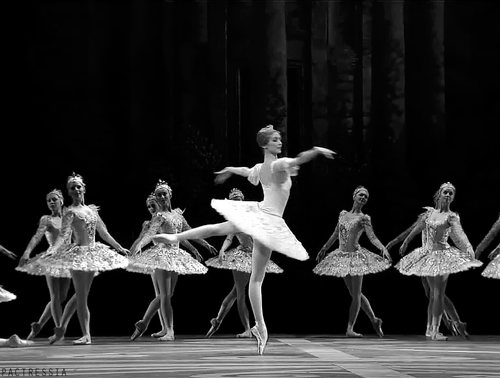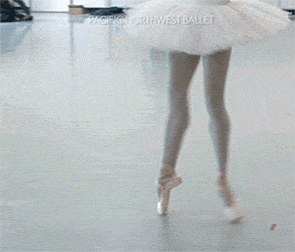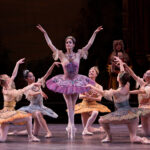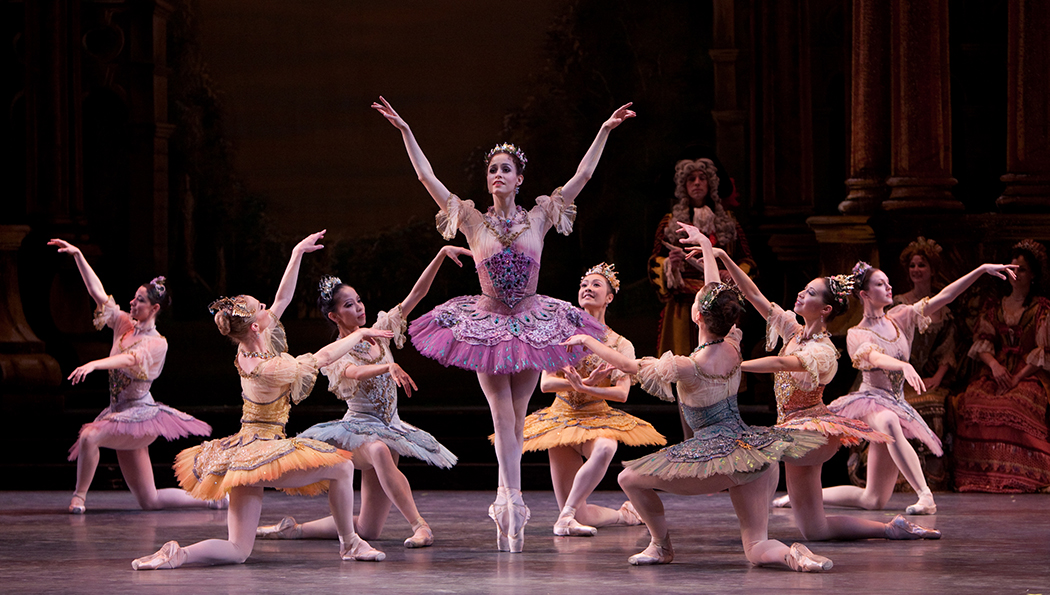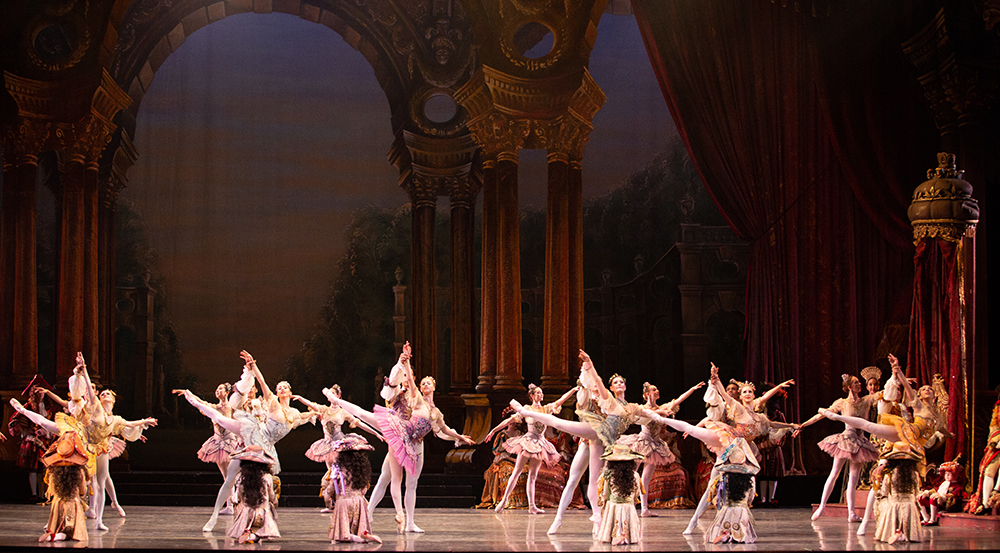From pirouettes to fouettés, here is a list of popular ballet turns that will have you spinning with enthusiasm.
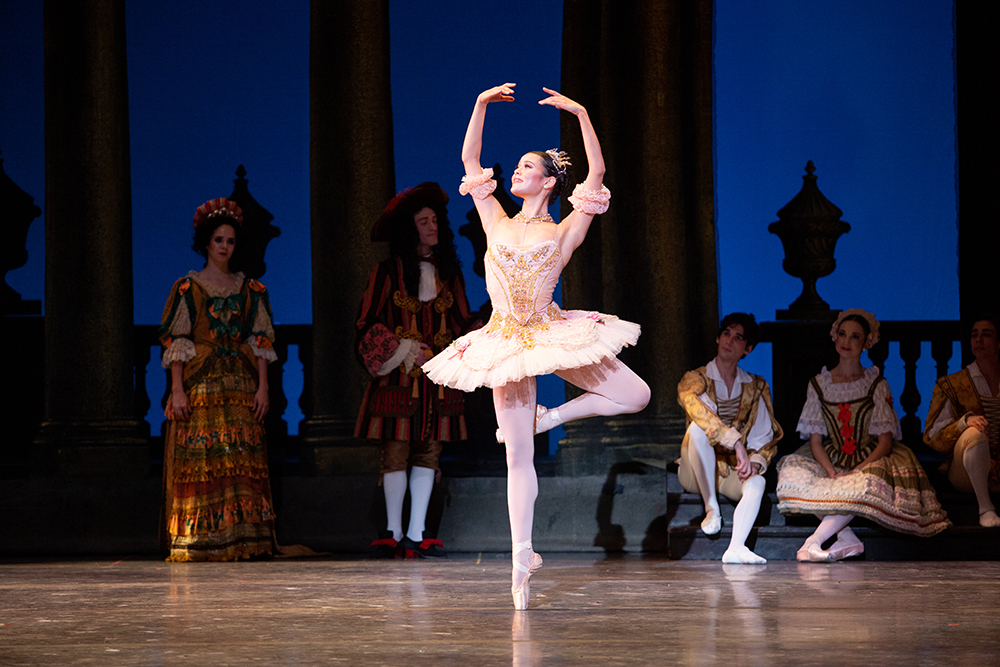
Chaînés
Chaînés, meaning “chains” in French, is a two-step turn where both feet alternate back and forth to keep moving in a line or circle. Dancers complete a full rotation for every two steps taken.
Piqué Turn
Meaning “to prick,” the term piqué has multiple uses in ballet. In terms of turning, the dancer is traveling across the stage, with one leg stepping en pointe or the ball of the foot and the other leg in the passé position. They also don’t just need to be single turns, a dancer can to a double, triple, etc.
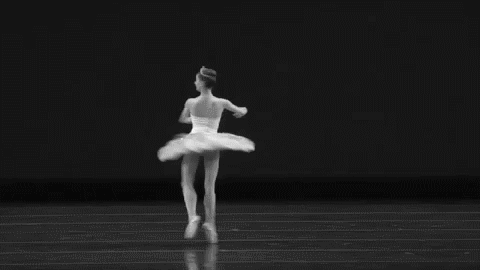
Pirouette
Pirouette means “spin” or “whirl.” They are very common in variations, pas de deux, and in corps de ballet pieces. Pirouettes are done by turning on one leg, with the other off the ground and most likely in passé. There are three types of pirouettes:
Pirouette en dehors – meaning “turning outwards,” the dancer’s body turns towards the raised leg.
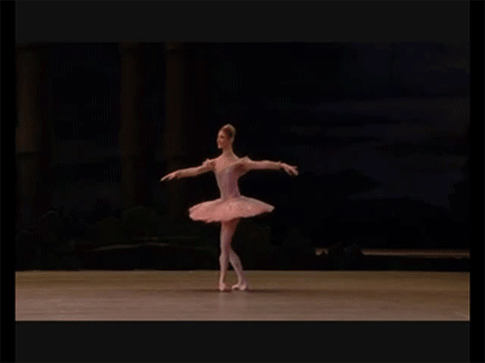
Pirouette en dedans – meaning “turning inwards”, the dancer’s body turns towards the supporting leg.
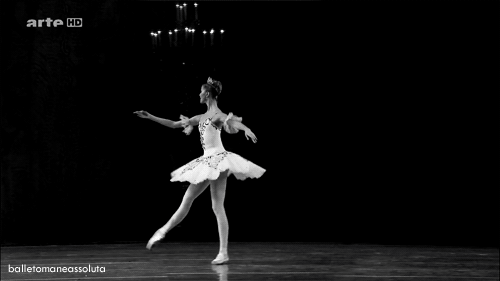
Pirouette à la seconde – This pirouette is commonly seen in men’s variations. What makes this turn unique is that one leg is raised at a 90 degree angle the entire time and finishes with bringing the leg into a passé, resulting in a whirlwind of pirouettes!
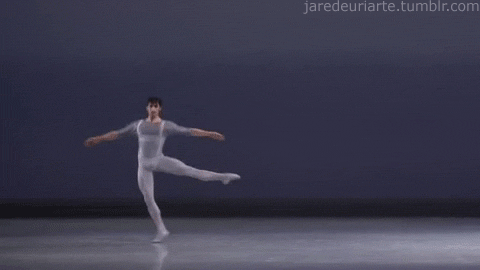
Fouetté
In French, fouetté means “whipped.” There are two main types of fouettè turns in ballet, Italian and Russian.
Russian – Russian fouettés are the most well-known! They are commonly performed by women in the coda section of the pas de deux. First, the dancer starts with one full pirouette in passé . Next, the dancer will do a plié on the standing leg, while the other leg extends to the front and “whips” to the side or a la secondé. Lastly, the dancer pops back up en pointe and brings the leg back in, to a passé, to turn again.

Italian – The Italian fouette is not as common but none-the-less just as stunning! It is mainly performed by women and starts with the dancer bringing one leg up into the air while going onto pointe, also known as a relevé développé. Next, the dancer will turn slightly and brush that same leg through the first position, now facing the back diagonally. Lastly, the dancer will do the fouetté by bringing the leg into an attitude and whipping around to the opposite diagonal…now, repeat!
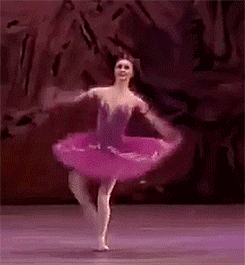
Attitude
An attitude turn is considered to be one of the more difficult turns on this list. To perform this turn, a dancer must stand on one leg with the other lifted (either in the front or back). The lifted leg is slightly bent creating a 145-degree angle.
